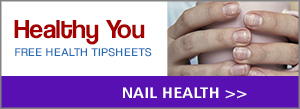The Department of Health and Human Services needs to take the lead on ensuring that health information shared online remains secure, confidential and safe, according to a November report from the Institute of Medicine. Specifically, HHS should develop a plan for minimizing safety risks as well as create a council that can oversee the use of health information technology.
The term “health information technology” is broadly used to refer to the management and storage of health records and patient care information in a computer system. Groups that use health information technology include health professionals at clinics, hospitals and medical practices. It is a “complex product,” said Paul Tang, MD, MS, a member of the IOM committee that developed the report.
“It takes a different kind of approach to ensure (health information technology’s) safe use compared to drugs and devices,” said Tang, who is also vice president and chief innovation and technology officer at the Palo Alto Medical Foundation in California.
Key findings of the report include the need for more collaboration and information-sharing among stakeholders, including the health professionals who use the systems on a daily basis, heath care organizations and designers of health information technology. The report suggests that users and creators of health information technology work together to create products that are easy to use and efficient.
The report calls for HHS Secretary Kathleen Sebelius to publish a surveillance plan within one year detailing how to minimize patient safety risks connected to health information technology, such as medication prescribing errors and delay of treatment due to loss of data. HHS would then issue annual progress reports. If progress is not satisfactory, the committee recommended that the Food and Drug Administration be directed by HHS to "exercise its authority to regulate health (information technology)."
To best learn from and act on the committee’s 10 recommendations, the report proposes that a new independent federal health information technology safety council be established and funded by HHS to "evaluate criteria for assessing and monitoring the safe use of health (information technology)." The council would also be responsible for making sure health information technology vendors encourage hospitals and clinics to share information about patient safety concerns. Currently, contracts with vendors shift the responsibility associated with unsafe health information technology incidents to the user instead of the product manufacturers, which might make health professionals hesitant about reporting any problems, said the report.
Other recommendations include developing a mechanism for both users and vendors of health information technology to report malfunctions and errors. According to the report, the process of disclosing any health information technology-related deaths, injuries or unsafe conditions should be mandatory for health information technology retailers and "voluntary, confidential and non-punitive" for health care providers.
The full report, “Health IT and Patient Safety: Building Safer Systems for Better Care,” is available at www.iom.edu.
- Copyright The Nation’s Health, American Public Health Association









